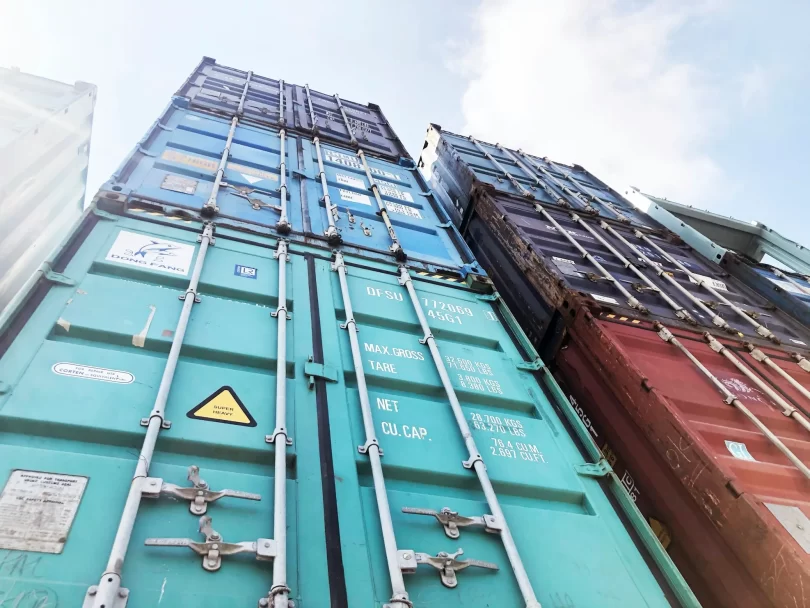Sustainable architecture no longer feels like a niche trend. It’s a mainstream necessity reshaping the way we think about buildings. Among the most exciting shifts in design today is the rise of container architecture—an eco-friendly movement transforming how people build homes, offices, and commercial spaces. At the center of this change lies the humble steel shipping container. Once used exclusively for transporting goods, it now finds new life in innovative construction. The appeal? It’s durable, affordable, and already manufactured. Instead of producing more, we reuse what’s already here. And that’s a powerful step toward sustainable living.
- The Rise of Container Architecture
Container architecture gained traction when designers started exploring modular, affordable structures. The simple boxy form of steel containers lends itself perfectly to creative adaptation. It’s easy to stack, join, and transport. Architects and builders recognized that these robust structures could serve not just as temporary shelters but as permanent homes and commercial spaces. What started as a cost-effective solution in urban areas quickly spread to rural environments and eco-resorts. People began appreciating the raw industrial look, coupled with the environmental advantages of reuse. Container architecture is not just trendy—it’s practical, scalable, and forward-thinking.
- Environmental Benefits of Reusing Steel Containers
Steel production is energy-intensive, involving mining, smelting, and considerable carbon emissions. Reusing shipping containers reduces the demand for new steel, making it a sustainable option for eco-conscious construction. These containers, designed to last decades under harsh conditions, bring durability without the environmental cost of fresh manufacturing. Builders increasingly look for shipping containers for sale not only for their affordability but also for their sustainable edge. Each reused container prevents thousands of pounds of metal from ending up in scrapyards. Rather than melting them down, we can use them in a form already suitable for structural use—saving time, energy, and the planet.
- Energy Efficiency and Insulation Upgrades
One common concern with container homes is energy efficiency. Steel, by nature, isn’t a great insulator. But with thoughtful upgrades, these homes can become highly efficient. Spray foam insulation, green roofs, and double-glazed windows all play a part. Positioning containers to take advantage of natural light and cross-ventilation reduces energy use. Designers often integrate solar panels and rainwater collection systems, turning simple boxes into self-sustaining ecosystems. Efficient lighting and low-energy appliances further reduce the carbon footprint. With proper planning, a container home can consume less energy than a traditional house while maintaining comfort, style, and function year-round.
- Cost-Effective Construction with a Green Edge
Building with containers cuts costs in multiple ways. The base structure—walls, floors, and roof—is already in place. That means fewer raw materials and less labor. Since containers are modular, builders can construct faster and more efficiently. Transportation costs stay low because containers move easily by truck, ship, or train. Many people choose containers for their affordability, but the sustainability aspect is just as appealing. They allow builders to go green without breaking the bank. Unlike custom eco-homes, which can balloon in cost, container structures offer a balance of price and environmental responsibility that’s hard to match.
- Versatility in Design and Application
Container architecture supports a surprising level of creativity. Designers can arrange containers vertically or horizontally, cut them for large windows or open-plan spaces, and even combine them to create multi-level structures. From sleek urban lofts to cozy rural cabins, containers adapt to countless architectural styles. They also suit commercial needs—cafés, retail shops, and pop-up offices all thrive in container formats. Their strength allows bold designs without extensive reinforcements. Architects aren’t limited by traditional forms and materials. Instead, they unlock flexibility with every container they repurpose, turning industrial shells into inviting, livable, and functional masterpieces that reflect personal or brand identities.
- Reducing Construction Waste Through Smart Reuse
Traditional construction generates a staggering amount of waste—scrap materials, packaging, broken parts, and unused products pile up quickly on job sites. Container architecture flips that equation. By starting with a prefabricated steel shell, builders dramatically cut down on debris. There’s less framing, fewer offcuts, and minimal excess. Even interior modifications follow a lean approach, using just what’s necessary. Every square foot of a container gets put to use, leaving little behind. This streamlined process aligns with zero-waste goals, helping builders and homeowners reduce their environmental footprint. The result is not just cleaner job sites, but cleaner communities.
- Off-Grid Potential and Mobility
Shipping containers lend themselves to off-grid living, thanks to their compact form and easy transportability. People looking for independence from utility companies often turn to container structures. Outfitted with solar panels, composting toilets, water collection systems, and battery banks, these homes support self-sufficient lifestyles. And when mobility matters, containers shine. You can move them across cities, states, or even countries. Whether used for tiny homes, mobile clinics, or disaster relief shelters, containers provide a reliable, movable base. This adaptability makes them perfect for modern nomads, remote workers, and those living in unpredictable environments where flexibility is essential.
- Urban Revitalization and Smart Land Use
Cities face growing pressure to use land efficiently and reduce sprawl. Container buildings offer a smart solution. They fit well into tight urban lots, convert underused spaces, and stack vertically without expensive foundations. Developers use them for infill projects, turning parking lots or vacant parcels into housing or retail hubs. Container-based developments breathe new life into neglected neighborhoods, often with minimal infrastructure investment. Their speed of construction helps meet urgent housing demands. And with thoughtful planning, they integrate green spaces, shared amenities, and community features. These steel boxes become catalysts for smart, dense, and sustainable urban transformation.
Container architecture represents more than a clever use of steel boxes. It’s a powerful response to climate change, housing shortages, and wasteful construction practices. By reimagining what already exists, we shift from a culture of consumption to one of conservation. Whether building a single-family home or an entire community, using containers promotes affordability, adaptability, and environmental stewardship. It proves that sustainable living doesn’t mean sacrificing style, comfort, or practicality. As demand for responsible design grows, container architecture stands out as a meaningful path forward—one that balances modern needs with a deep respect for the resources we share.







